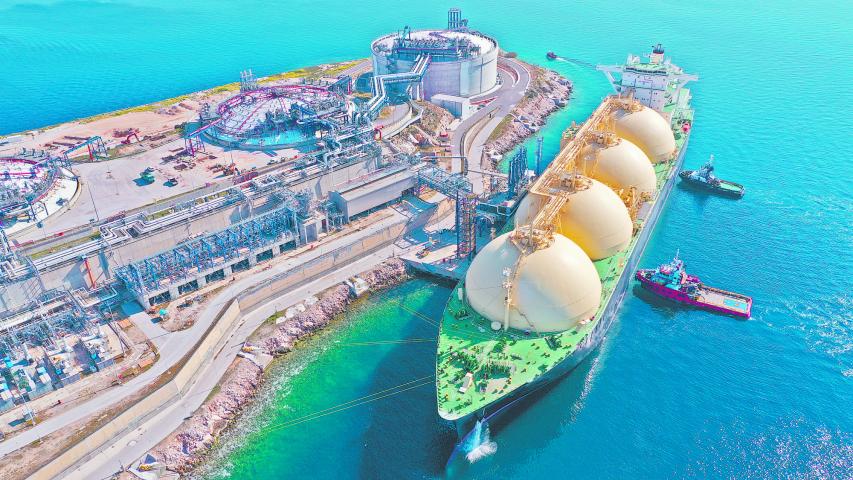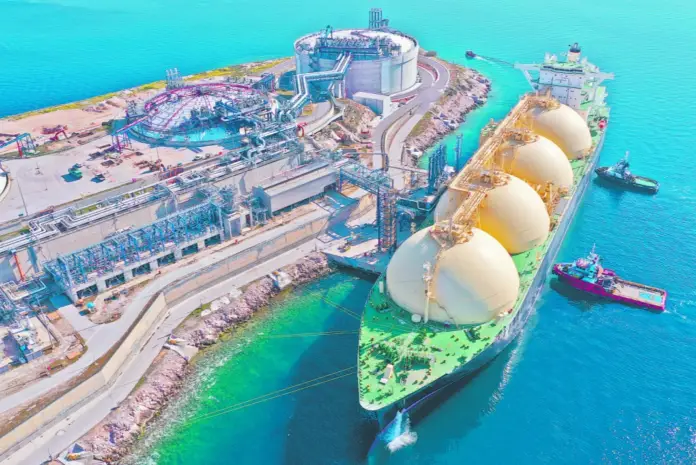Mexico’s government is rushing negotiations with private companies to double its strategic natural gas storage capacity earlier than planned out of fear that U.S. President Donald Trump could use the country’s heavy dependence on the fuel as leverage in trade negotiations, three sources familiar with the matter said.
Mexico, a net importer of natural gas, has 2.4 days of natural gas storage capacity in facilities designed for off-take operations.
The plan is to increase storage capacity to at least five days of national consumption in appropriate facilities such as salt caverns and depleted fields, two government sources and one industry source said.
By comparison, countries such as France have average natural gas storage equivalent to just over 105 days of their national consumption and others, such as Spain, have about 20 days.
The initial plan of President Claudia Sheinbaum’s government was to double storage capacity by 2030, when her administration ends. However, Trump’s rise to power and more extreme weather forced him to move the plan forward to late 2025 or, at the latest, early 2026, the sources said.
A White House official, asked about the possibility of using Mexico’s dependence on U.S. natural gas as leverage, said the Trump administration is still reviewing its trade relationship with Mexico but that “all options” remain on the table.
The Energy Ministry did not immediately respond to a request for comment from Reuters.
“With Trump in the presidency, it is a very high risk that something similar to what happened in 2021 with the gas coming from Texas could happen,” said one of the Mexican government sources.
In February 2021, a winter storm in Texas caused the supply of natural gas through pipelines to Mexico to be cut off, leaving millions of users without electricity in almost the entire country and accumulating losses of just over $6 billion in a week, according to private estimates.
Imports – almost entirely from the United States – supply 72% of the total demand for natural gas consumed in Mexico. The fuel is used mostly to generate electricity and for industrial activities. The vast majority of natural gas imports are carried out by pipeline and only a fraction by sea.
Since Sheinbaum won the presidency of Mexico in the middle of last year, her energy team has met with Mexican and foreign businessmen to resume the plan of her predecessor and ally, Andrés Manuel López Obrador, to increase the storage capacity of natural gas for emergencies.
And, once they learned that Trump would return to the White House after winning the November elections, the authorities have shown their concern, especially after the Republican’s threats to impose tariffs on Mexico if it does not stop the flow of drugs and migrants to the north and after an unusual cold wave in Texas intensified by the La Niña phenomenon.
“They are worried (in the Mexican government),” said one of the business sector sources who has participated in at least two meetings with officials. “They fear that Trump could use the supply (of natural gas) as a coercive measure.”
Long-standing policy
The storage of natural gas for energy security is a policy that Mexico has sought to implement for more than a decade, when imports of the fuel began to skyrocket, going from 1,258 million cubic feet per day (mmpcd) in 2009 to 6,178.6 mmpcd in 2023, amid a drop in local production of the hydrocarbon.
In 2018, Sener presented a document instructing the manager of the natural gas transportation and storage system, Cenagas, to have a minimum of five days of national consumption as a strategic inventory of natural gas – 45 trillion cubic feet (Tcf) – by 2026.
However, the previous government failed to attract bidders for tenders to transform four depleted oil fields into storage facilities.
According to sources, the capital cost required to double natural gas storage capacity would be between $420 million and $2.58 billion, depending on the technology used.
The lower limit corresponds to depleted hydrocarbon fields and the upper limit corresponds to storage in liquefied natural gas (LNG) tanks.

Source: eleconomista




